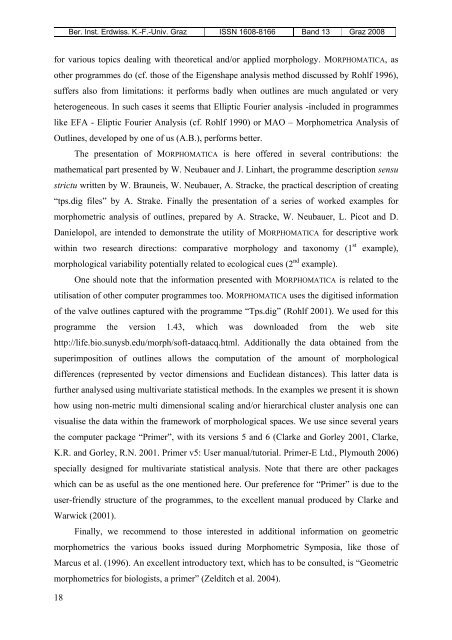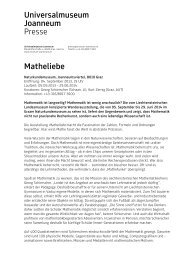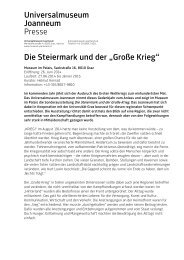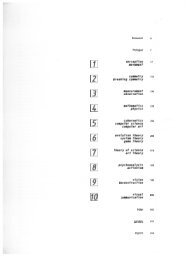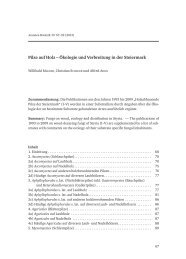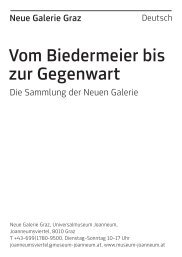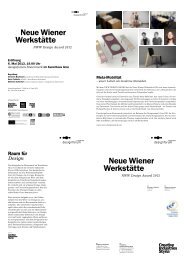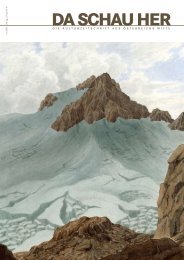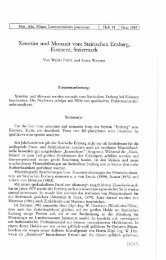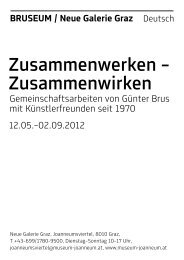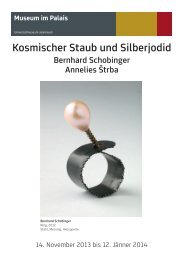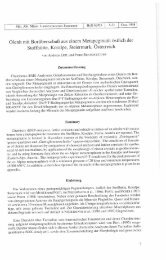CONTRIBUTION TO GEOMETRIC MORPHOMETRICS ...
CONTRIBUTION TO GEOMETRIC MORPHOMETRICS ...
CONTRIBUTION TO GEOMETRIC MORPHOMETRICS ...
You also want an ePaper? Increase the reach of your titles
YUMPU automatically turns print PDFs into web optimized ePapers that Google loves.
18<br />
Ber. Inst. Erdwiss. K.-F.-Univ. Graz ISSN 1608-8166 Band 13 Graz 2008<br />
for various topics dealing with theoretical and/or applied morphology. MORPHOMATICA, as<br />
other programmes do (cf. those of the Eigenshape analysis method discussed by Rohlf 1996),<br />
suffers also from limitations: it performs badly when outlines are much angulated or very<br />
heterogeneous. In such cases it seems that Elliptic Fourier analysis -included in programmes<br />
like EFA - Eliptic Fourier Analysis (cf. Rohlf 1990) or MAO – Morphometrica Analysis of<br />
Outlines, developed by one of us (A.B.), performs better.<br />
The presentation of MORPHOMATICA is here offered in several contributions: the<br />
mathematical part presented by W. Neubauer and J. Linhart, the programme description sensu<br />
strictu written by W. Brauneis, W. Neubauer, A. Stracke, the practical description of creating<br />
“tps.dig files” by A. Strake. Finally the presentation of a series of worked examples for<br />
morphometric analysis of outlines, prepared by A. Stracke, W. Neubauer, L. Picot and D.<br />
Danielopol, are intended to demonstrate the utility of MORPHOMATICA for descriptive work<br />
within two research directions: comparative morphology and taxonomy (1 st example),<br />
morphological variability potentially related to ecological cues (2 nd example).<br />
One should note that the information presented with MORPHOMATICA is related to the<br />
utilisation of other computer programmes too. MORPHOMATICA uses the digitised information<br />
of the valve outlines captured with the programme “Tps.dig” (Rohlf 2001). We used for this<br />
programme the version 1.43, which was downloaded from the web site<br />
http://life.bio.sunysb.edu/morph/soft-dataacq.html. Additionally the data obtained from the<br />
superimposition of outlines allows the computation of the amount of morphological<br />
differences (represented by vector dimensions and Euclidean distances). This latter data is<br />
further analysed using multivariate statistical methods. In the examples we present it is shown<br />
how using non-metric multi dimensional scaling and/or hierarchical cluster analysis one can<br />
visualise the data within the framework of morphological spaces. We use since several years<br />
the computer package “Primer”, with its versions 5 and 6 (Clarke and Gorley 2001, Clarke,<br />
K.R. and Gorley, R.N. 2001. Primer v5: User manual/tutorial. Primer-E Ltd., Plymouth 2006)<br />
specially designed for multivariate statistical analysis. Note that there are other packages<br />
which can be as useful as the one mentioned here. Our preference for “Primer” is due to the<br />
user-friendly structure of the programmes, to the excellent manual produced by Clarke and<br />
Warwick (2001).<br />
Finally, we recommend to those interested in additional information on geometric<br />
morphometrics the various books issued during Morphometric Symposia, like those of<br />
Marcus et al. (1996). An excellent introductory text, which has to be consulted, is “Geometric<br />
morphometrics for biologists, a primer” (Zelditch et al. 2004).


